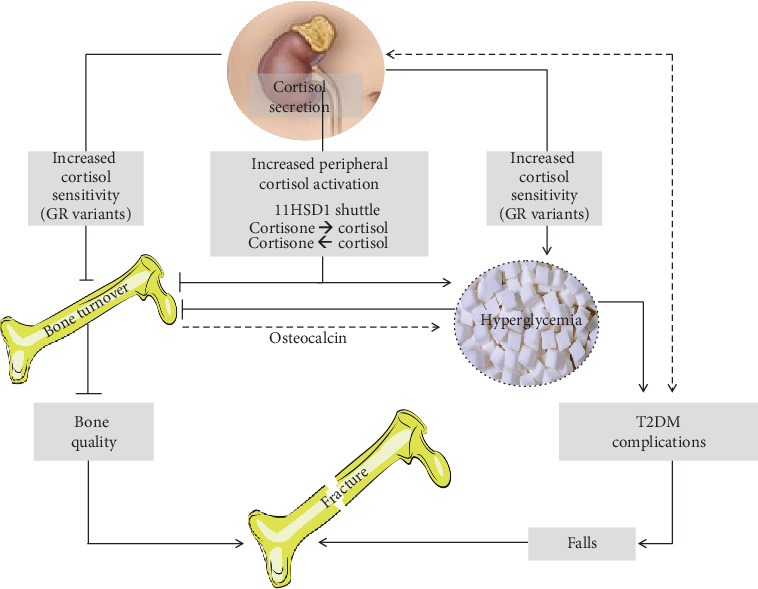Figure 3.

Cortisol milieu and bone fragility in type 2 diabetes mellitus (T2DM). In T2DM patients, an increased (even though still within the normal range) cortisol secretion is present, particularly in those affected with the diabetic complications, which in turn is hypothesized to be a trigger for the increased cortisol secretion itself. The sensitizing variants of the glucocorticoid receptor (GR) may increase the negative effect of cortisol on both T2DM control and bone metabolism, contributing to the shift in the balance between osteoblastogenesis and adipogenesis of mesenchymal stem cells in bone. The degree of the interconversion of cortisone in cortisol, due to the activity of the 11βhydroxysteroidodehydrogenase type 1 (11HSD1), may influence bone metabolism in T2DM. Indeed, in humans, the selective inhibition of 11HSD1, which has been even suggested as potential treatment for T2DM, has been also demonstrated to improve diabesity and osteoblast differentiation in a mouse model. Finally, in T2DM, a vicious circle could be hypothesized between the increased cortisol secretion, peripheral activation, and sensitivity (i.e., “cortisol milieu”) and bone and glycometabolic control. Indeed, the low bone turnover induced by this activated cortisol milieu could contribute in reducing the undercarboxylated osteocalcin levels, which decrease and, in turn, may worsen the glycometabolic control, therefore perpetuating the mechanisms leading to reduced bone turnover. The final effects of these alterations of the cortisol milieu in T2DM may be on one side of the reduction of bone quality, since the low bone turnover reduces the possibility of the microcrack repairing, and, on the other side, the worsening of the T2DM complications that ultimately could lead to an increased risk of falls. The reduction of bone quality together with the increased risk of falls is among the most important factors associated with bone fragility in T2DM.
